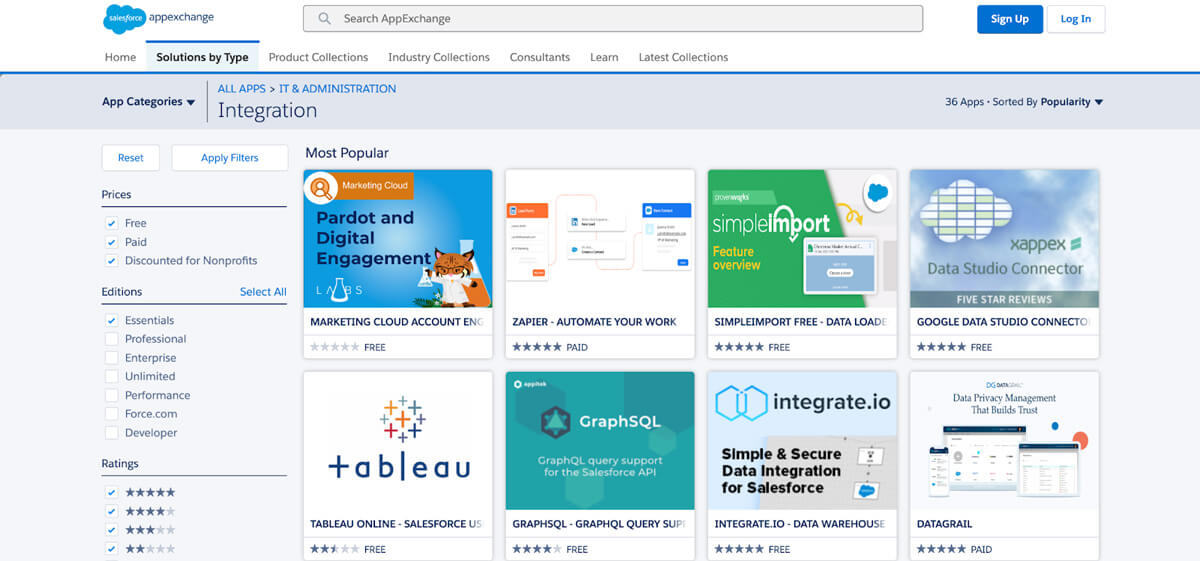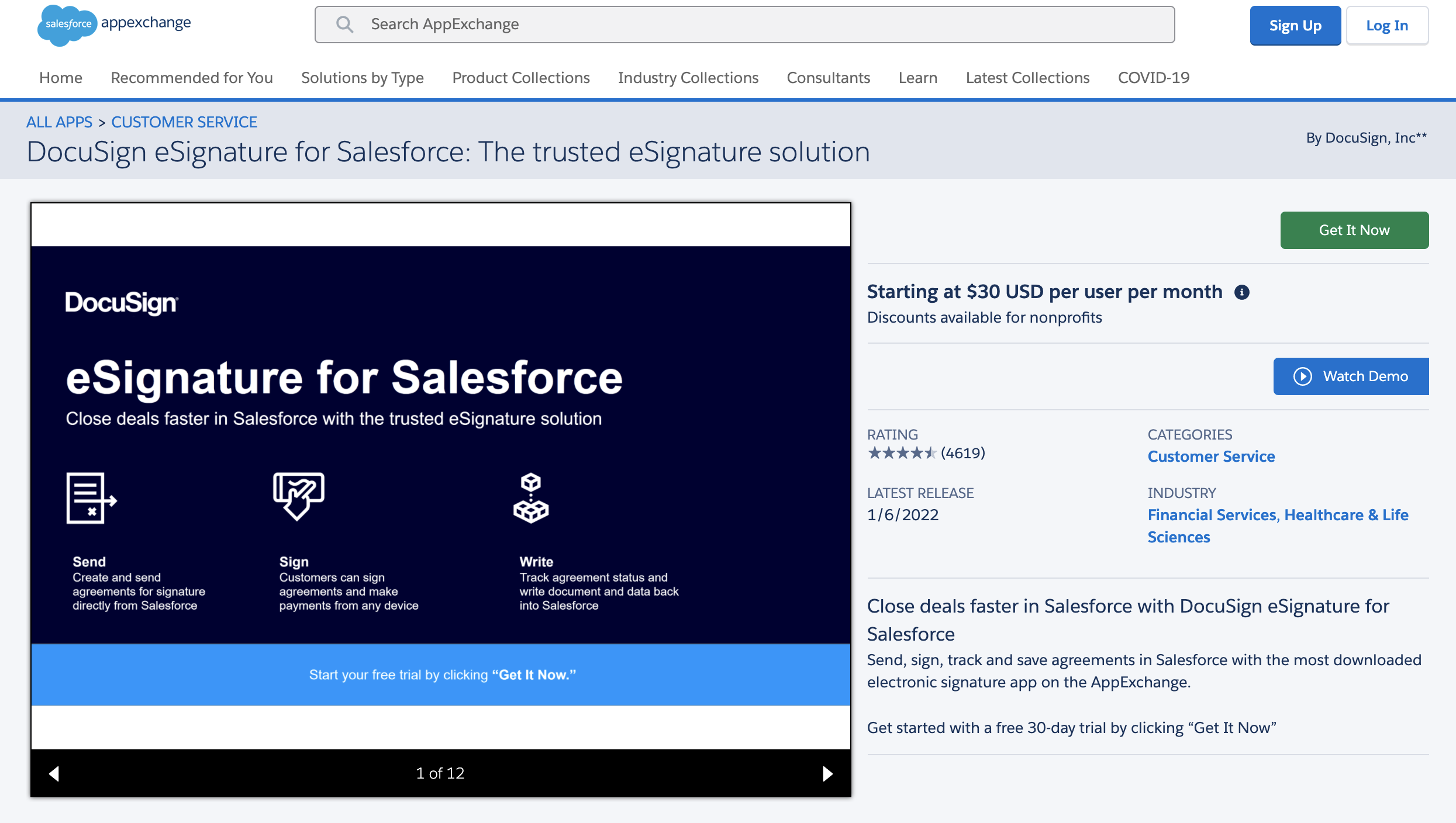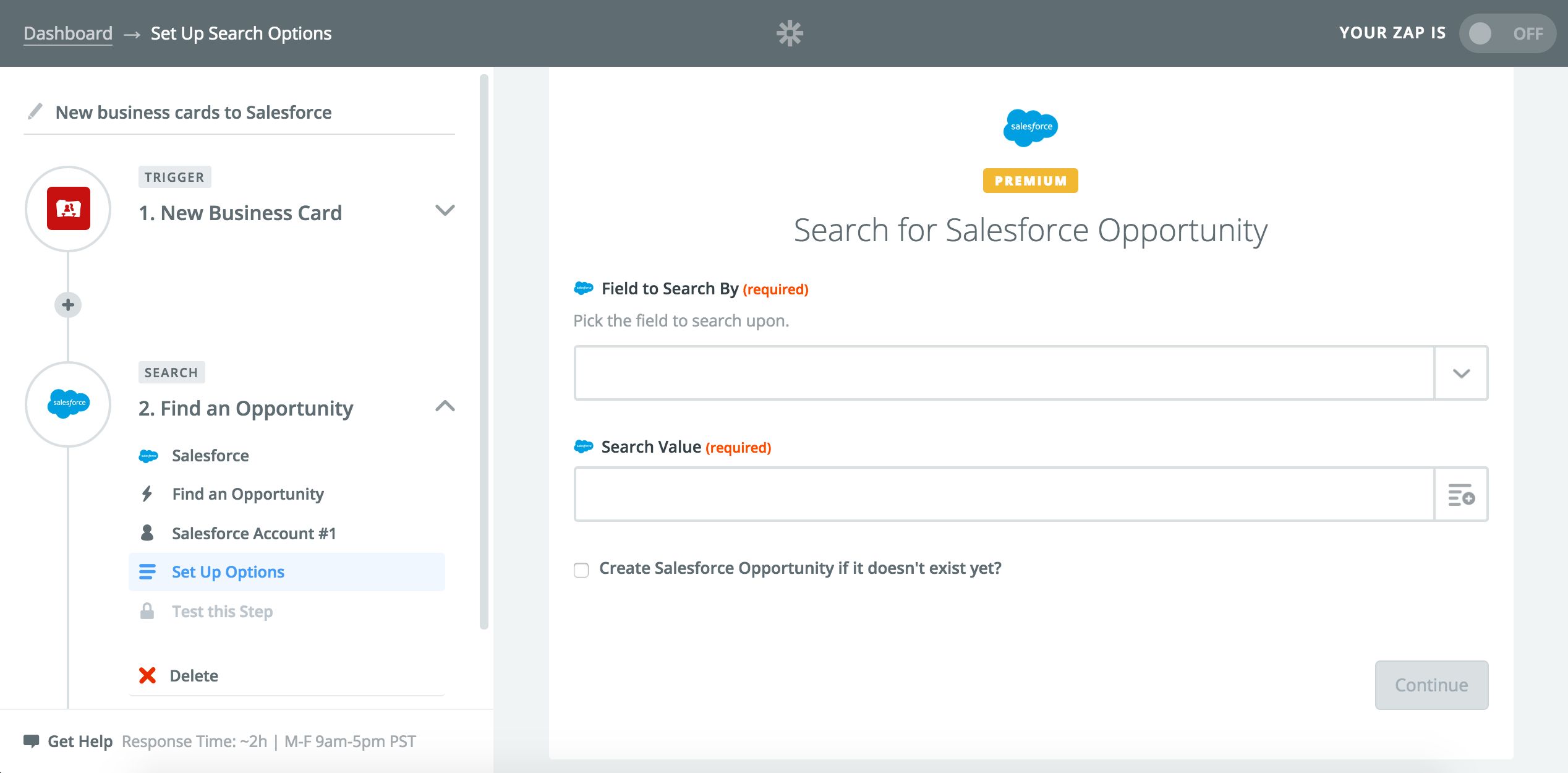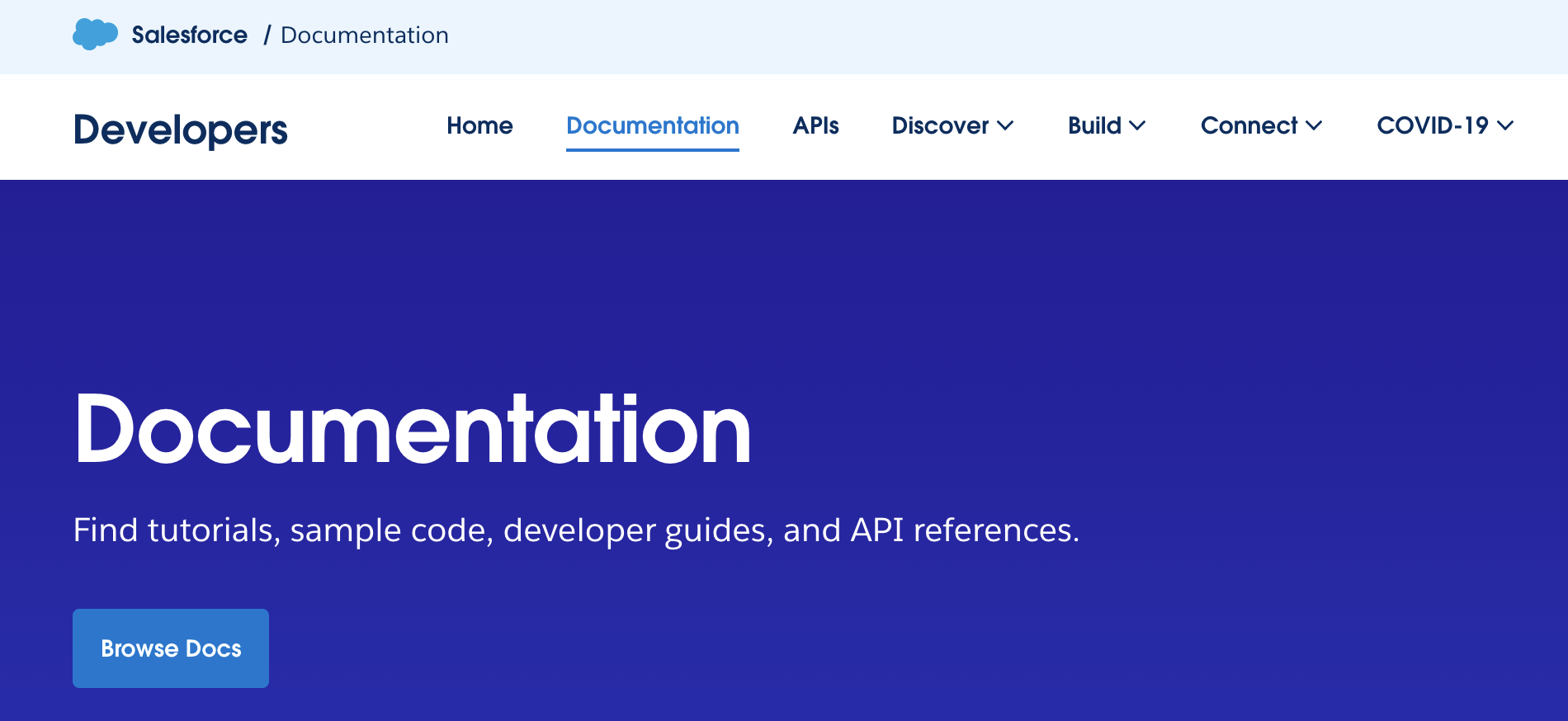Looking for the best CRM for freelancers? Check out our list of the top six CRM solutions for freelancers in 2024 to get the best features for your business.
CRM integration enables you to add or augment CRM features by connecting your software to third-party tools. Most CRMs have built-in integrations that can be linked to your external tools; if that’s not an option, you can also use a third-party connector or build one from scratch. CRM integration allows your sales tools and data to communicate with each other and share information, creating a seamless experience that links your CRM with email, calendar, and more.
Thanks to Salesforce for sponsoring this article. Salesforce offers numerous CRM integrations to supercharge your sales and marketing efforts. In this article, we've provided screenshot examples throughout to best help you understand the top general CRM integrations and how to implement them. Check out Salesforce's full integrations with a 30-day free trial:
Although the CRM you implement may tick most or all of your boxes, there may be a few holes when it comes to essential features. CRM integration solves that issue by connecting outside tools to your CRM, enabling them to “talk” to each other – in other words, exchange data so that everything you need is in one central location. Integrations are a way for you to tailor a CRM to meet your company’s ideal specifications, so you can add or enhance the functions you need.
There are four ways to perform CRM integration, each with varying levels of difficulty:
CRM integration types span a wide range of categories. Some of the most commonly-used integrations are calendar and email clients, internal and external communication software, and social media platforms. Other types of CRM integrations include event management, accounting, prospecting, and ecommerce. There are even integrations tailored for specific industries – for example, real estate, healthcare, and finance.
When integrating CRM apps, first evaluate which CRM functions you want to add or enhance. Once you have that figured out, search for the apps that correspond with those desired features to see if they can be integrated natively. If not, you can look to a third-party connector to see if it’ll support your CRM and the apps you wish to integrate. Alternatively, should your company have the means for it, you can custom-build the integrations or apps you need instead.
CRM integration encompasses a breadth of categories and functionalities. This makes it possible for businesses or teams to turn their CRM software into a centralized business hub, eliminating the need for users to toggle across multiple programs to accomplish their tasks. Below are 13 common types of CRM integrations, listed alphabetically. Depending on the needs of your business, you can elect to add as few or as many of these integrations as you like.
Once you’ve figured out which CRM integrations your team or company needs, consider how you’ll have to install them. Depending on what you’re looking for, this can be as simple as clicking a few buttons or as complex as building an application from scratch. Let's now look at the different ways to integrate your apps.
CRM integration can be done via one of four ways: natively, through a third-party connector or API, or with a custom API. Each of these methods has its benefits and its drawbacks. Ultimately, the best integration process for your business will come down to how much flexibility you’d like your CRM apps to have – and how much time and money you’re willing to spend for bespoke integrations designed just for your company.
Native integrations are built into a CRM. Activating them is as simple as choosing the app and linking your third-party account information to your CRM – no coding required. Native integrations are often free or included as part of your CRM subscription, which makes them the affordable choice. They’re fairly low maintenance and backed by your CRM provider’s user support team should things go awry. However, native apps usually lack flexibility and can’t always scale alongside a company.
If the app you want to integrate isn't native to your CRM and available in its app marketplace, some third-party software tools offer their own APIs to connect with your CRM. These APIs provide a technical "doorway" into the third-party system, allowing your CRM to talk with certain aspects of the software. While this is more involved than native integrations, most allow you to use the third-party API without coding anything, though sometimes getting the two systems to talk can be challenging.
Third-party connectors act as a bridge between your CRM and an application that is not native to it. The most popular of these connectors is Zapier, an automation tool that links CRMs to over 3,000 outside apps. This is a more simplified (and less technical) way of adding non-native CRM integrations than going the custom API route below, but these connectors often come with a monthly cost themselves, so you’ll need to factor that into your CRM implementation budget.
Custom API integrations are built by a team of developers who’ll build their own API so the system you want to integrate can talk to your CRM. This can either be done in-house or by a third-party company. This method of CRM integration is the most technical, expensive, and time-consuming – especially if there are multiple apps that need to be integrated. However, it’s worth the investment if it’s necessary for your business to have a specific set of CRM functions.
Among the ways to integrate your CRM with third-party apps, native integration is the most common. Thus, it’ll be the primary focus for this section. Although we are using Salesforce as the basis for this example, the process itself is fairly standard across CRMs. To add integrations to your CRM, follow these five steps below.
If you're still looking for a CRM with advanced integration capabilities that add to its power and customization, check out Salesforce. Visit their website for a full list of integrations in the Salesforce App Exchange and to take advantage of their free 30-day trial.
Before anything, assess your CRM’s features to see what’s missing and/or what could be improved in relation to your business goals. This will help you prioritize apps you need to integrate and prevent you from integrating ones you may never use or need.
Once you’ve determined which CRM integrations you’d like to add, make a list of corresponding apps – ideally ones you already use – so that you’ll know what to search for in your CRM’s app marketplace of natively-integrated tools.
You can access your CRM’s app marketplace through your CRM software or via a separate page. Integrations can be filtered by a number of parameters such as category, popularity, and recent additions. You can also look for a specific app by typing its name into the search bar.

Once you’ve found the integration you’ve been searching for, add it to your CRM. This is often as simple as clicking a button that says “install” or “enable.” In some cases, a setup guide may be included that you can reference should you need any assistance with the installation process. (Salesforce offers this with most of its integrations.)

Should the integration you want not be native to your CRM, you can first check to see if the system you want to integrate offers its own API. The exact specifications and steps for connecting your CRM using the third-party API is unique to the tool you need.
If the tool you want to integrate doesn't offer its own API, use a third-party connector like Zapier to complete the process. Search for the integration you want and use the middleware to link it to your CRM. From there, the process is the same as connecting a native integration – add your third-party account information and configure the settings.

If the app integration you want can’t neither be added natively nor through middleware, you can enlist a team of in-house or external developers (such as Upwork freelancers) to create an API integration that’s tailor-made for your business. If your dev team is unfamiliar with the CRM you use, most CRM software companies provide ample documentation on best practices when it comes to building within their platform.
Bear in mind that this isn’t always a tenable solution – particularly if your company isn’t large enough to fund such an endeavor.

Whether you integrated natively or built an app from scratch, you must take a few moments to test the CRM to make sure the integration works as intended – for instance, reduce bottlenecks and provide a comprehensive view of customer information and interactions. More importantly, ensure this new app doesn’t compromise other CRM functions, as everything should work in harmony with one another.
CRM software is seldom ready to use out of the box, even if it meshes well with the needs of your business. One way to fill any remaining gaps is by using CRM integration, as it’ll imbue your software with the features you need to meet your sales and marketing goals. That’s not the only benefit of integration – here are three more reasons to incorporate outside apps into your CRM:
Integrating your CRM with certain apps can be time-consuming, but the benefits are often worth it. As you decide what to integrate, start with the integrations that will bring the greatest benefit to your team, especially if they're native to the CRM. If you'll need to use a third-party connector or custom API, conduct a cost-benefit analysis and prioritize your time accordingly.
To ensure your integration process goes smoothly, here are four quick tips to keep in mind:
Keep these in mind as you start integrating your CRM. As you do, you'll also discover additional tips and tricks to improve your process.
All businesses can benefit from CRM integration because it’s a surefire way to increase productivity and enhance workflow through the consolidation of essential sales tools. There are some considerations to keep in mind, such as cost and functionality. However, with careful planning and budgeting, your integration framework can go a long way toward maximizing your CRM’s capabilities and contributing to the success of your business.